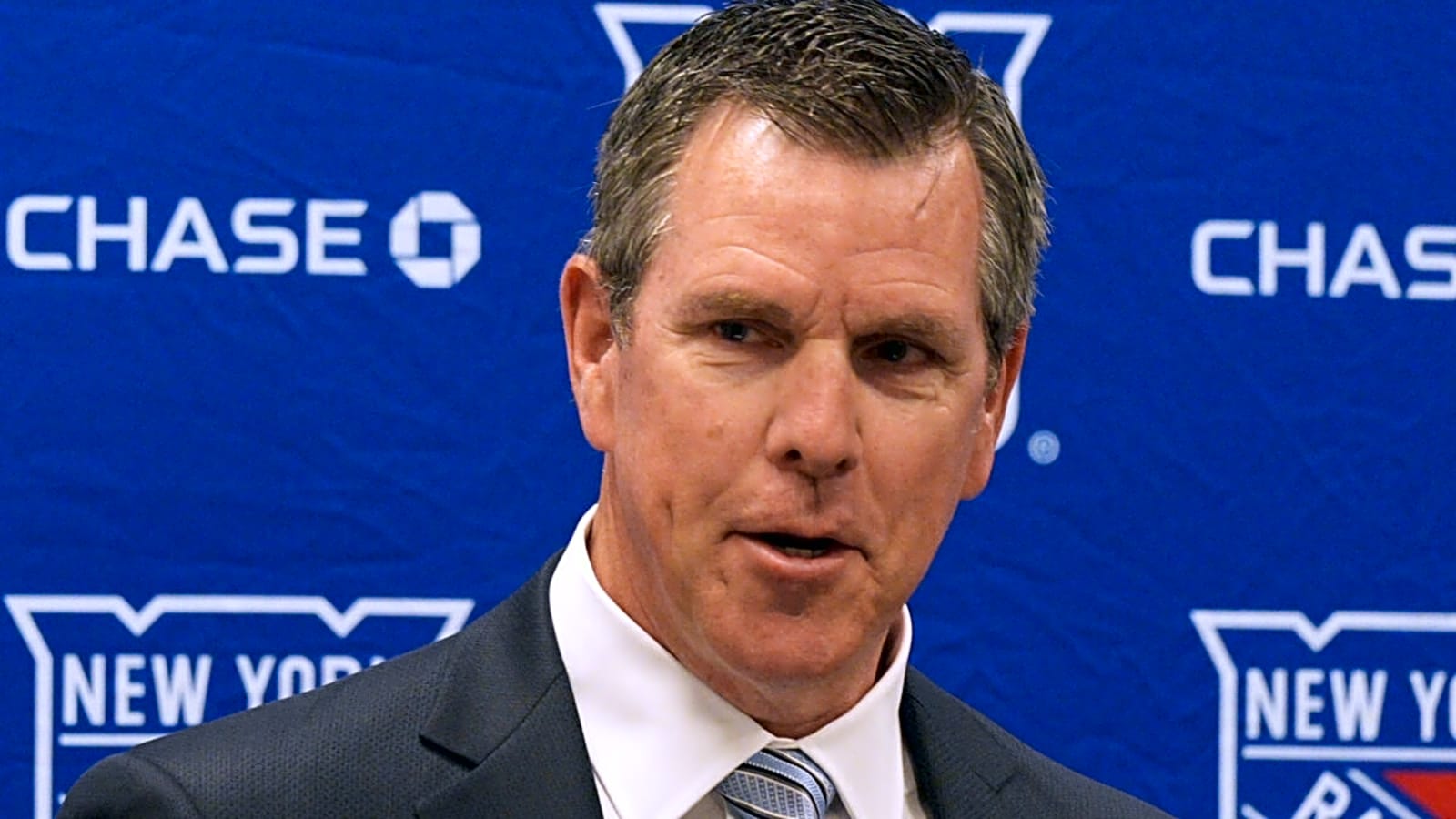
The 2024–25 New York Rangers ended the season with a bottom-five power play. After years of being near the top of the league, the power play collapsed. They finished at 17.6%, 28th league wide, and it was a major part of the disappointing season that ended with the Rangers missing the playoffs.
Now, 11 games into the 2025–26 season, the Rangers stand at a similar point. The power play is converting just 14.3% of the time. This signals that last season was not just a down campaign, but rather the beginning of a concerning trend. Something needs to change, whether it’s personnel, strategy, or even bringing up a prospect from the Hartford Wolf Pack, the Rangers have their work cut out for them.
No Net-Front Presence
The biggest difference between this Rangers power play and the ones that used to rank near the top of the league is what’s happening, or not happening, in front of the net. Losing Chris Kreider has clearly played a part. For years, he was one of the NHL’s best net-front scorers, a player who made goalies uncomfortable. His ability to screen, tip, and clean up rebounds forced penalty killers to collapse toward the crease, opening up space for the perimeter shooters.
Now, that presence is gone. The Rangers’ first unit doesn’t have a true net-front option, and it shows. Most of their chances come from the outside. Shots are visible all the way in, and there’s rarely a second or third effort on loose pucks. The team still has the skill to generate looks, Artemi Panarin, J.T. Miller, and Vincent Trocheck can move the puck as well as anyone, but the element of chaos that once made them dangerous has disappeared.
The result is a power play that feels predictable. Teams know where the puck is going, and they’ve adjusted. The Rangers are forced into low-percentage attempts, and when they do get shots through, there’s nobody creating traffic. It’s a structural issue that’s carried over from last season.
Possible Answers
If the Rangers are serious about turning this around, they can’t just hope the numbers improve on their own. Something needs to change, and there are a few realistic options that could give the power play new life. One is to play Will Cuylle net-front. Cuylle brings a different kind of presence than Kreider did. He’s not as polished around the crease, but he’s strong on second efforts and harder to move. Right now, the Rangers have nobody living in front of the net. Every chance comes from the perimeter, every shot is clean for the goalie to see. Cuylle has the edge and compete level to change that. He doesn’t need to score, he just needs to make the goaltender’s job harder.
Another possible fix is to split the talent into two equal units. The Rangers have leaned too heavily on one power-play group for years. When that unit isn’t converting, it drains momentum. Dividing the talent would not only balance ice time, but also create internal competition and force different looks. It would give other players more touches instead of leaving them cold on the bench while the top group eats up nearly the entire power play. Other successful teams have embraced this approach, using two fresh, aggressive units instead of one predictable one, and it’s something the Rangers should seriously consider.
Finally, the Rangers could look to American Hockey League affiliate Hartford, where Gabe Perreault has started strong. Perreault’s playmaking ability and vision could add exactly what this power play lacks: patience, deception, and a willingness to find seams. He processes the game differently, where others force passes, he waits them out. Calling him up would be a risk, but the reward could be significant. The Rangers need creativity, and Perreault’s skill set could give their second unit an identity instead of a placeholder role.
The Bigger Picture
A bad power play doesn’t just cost goals, it changes games. The Rangers have already lost momentum in several this season because of failed opportunities with the man advantage. When a team can’t capitalize, it shifts pressure back onto their five-on-five play, which wears down energy and confidence. In 2024-25, that same problem snowballed into a full-season identity crisis. What was once one of the Rangers’ greatest strengths has turned into a weakness opponents can plan around.
Through 11 games, it’s clear this isn’t about bad luck or a few missed chances. The issues run deeper. The entries are slow, the puck movement is predictable, and there’s no real threat around the crease. The Rangers have the talent to be dangerous, that much isn’t in question, but they don’t look dangerous. When they play exclusively on the perimeter, the entire advantage collapses into a series of low-percentage shots.
This has to be a turning point. The Rangers have enough high-end players to fix it, but only if they’re willing to change how they approach it. Whether it’s Cuylle causing chaos in front, two balanced units bringing competition, or Perreault’s creativity from Hartford, something has to shift. The longer they wait, the more this version of the power play becomes part of who they are.
The Power Play Needs to Improve
At some point, talent stops being an excuse. The Rangers have too much of it for their power play to sit near the bottom of the league two seasons in a row. This isn’t a dry spell or a bad stretch, it’s a pattern. The structure is predictable, the roles are unclear, and the identity that once made them dangerous has faded. Losing Kreider changed the look, but the lack of adjustment since then is what’s most concerning.
Something has to give and the Rangers can’t keep waiting for this to fix itself. The longer they do, the harder it will be to shake the reputation of being a team that can’t score when it matters most.
It’s still early, but the warning signs are clear. The power play isn’t just failing to produce goals, it’s failing to inspire any confidence. Until that changes, the Rangers will continue to chase games they should be controlling. For a roster built to contend, that’s not good enough.
More must-reads:
- NHL’s Frozen Frenzy fails the marketing test — again
- Mammoth sign Logan Cooley to eight-year extension
- The 'World Series walk-off home runs' quiz
Breaking News
Trending News
Customize Your Newsletter
 +
+
Get the latest news and rumors, customized to your favorite sports and teams. Emailed daily. Always free!








